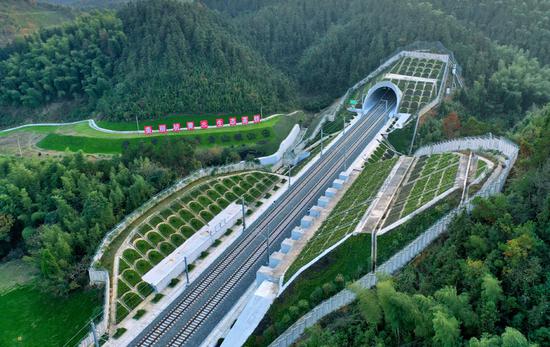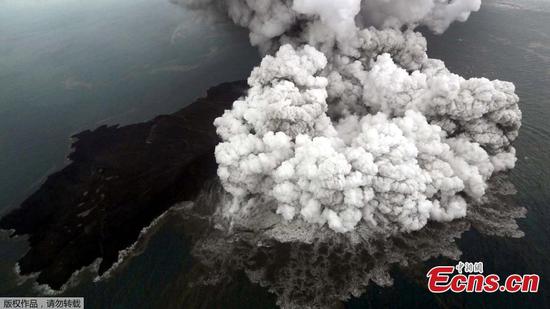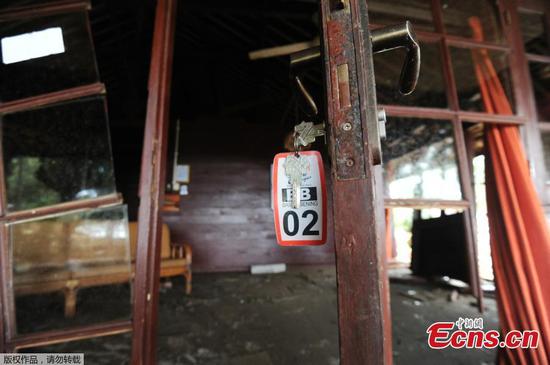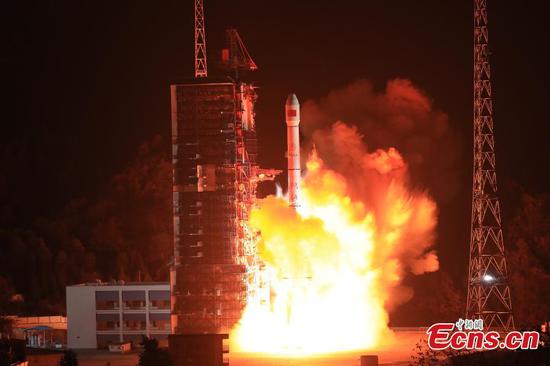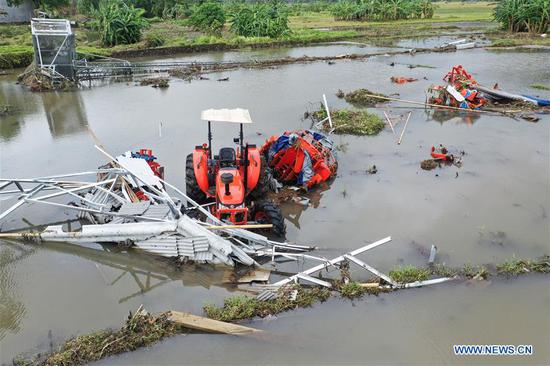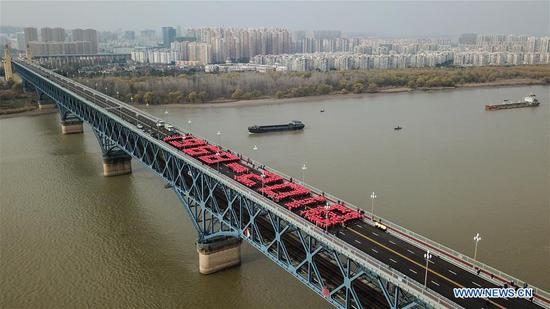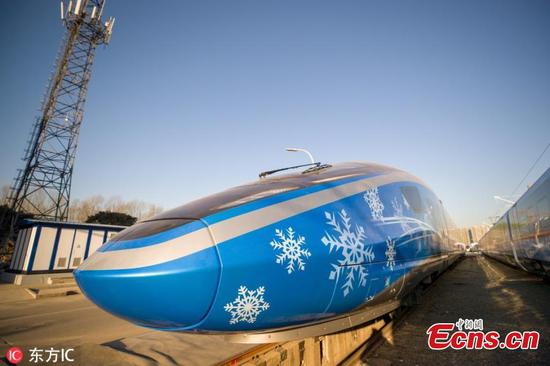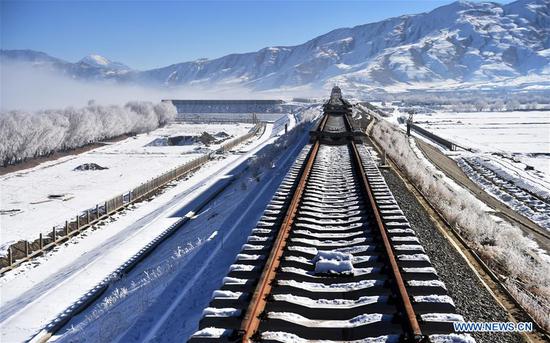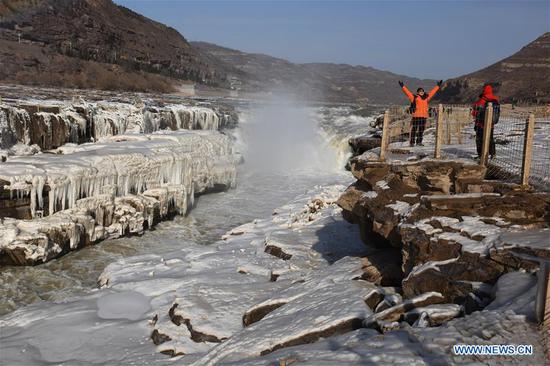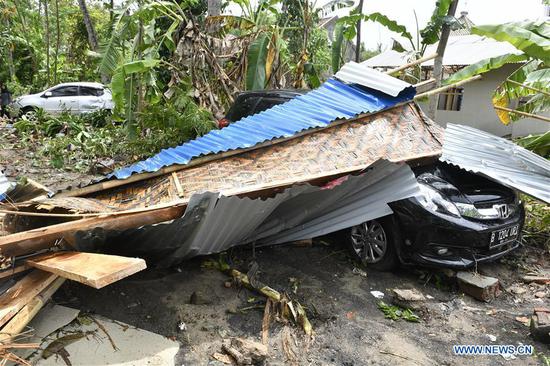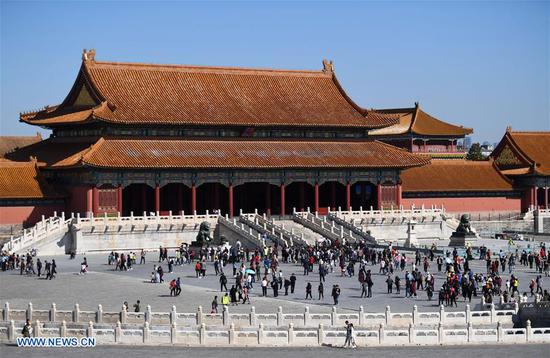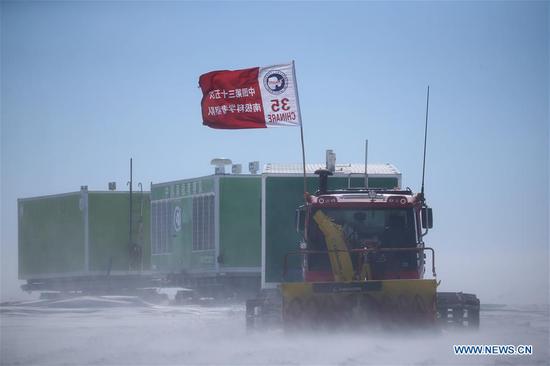
Photo taken on Dec. 1, 2018 by a drone shows an international duty free mall in Sanya, south China's Hainan Province. China's Hainan Province raised its annual tax-free shopping quota to 30,000 yuan (about 4,300 U.S. dollars) per year from the current 16,000 yuan for travelers, without limit on the number of purchases, according to a joint statement from the Ministry of Finance (MOF) and China's customs and taxation authorities. (Xinhua/Yang Gaunyu)
Marine economy sees 7.2% annual growth since 2012: report
China's southern marine economic zone including the South China Sea has outgrown the north and east marine economic zones in gross ocean product, reaching 3 trillion yuan ($440 billion ) in 2017, an increase of more than 80 percent since 2012, a report said.
Analysts praised China's improved techniques in exploiting the south economic zone, especially the South China Sea, saying that the stabilized and improved situation in the region contributed to the growth of its marine economy.
China's marine economy has enjoyed an annual growth of 7.2 percent since 2012, reaching 7.76 trillion yuan in 2017, according to a report submitted on Monday for review at a bimonthly session of the National People's Congress Standing Committee, the Xinhua News Agency reported.
China's marine economy, which consists of three marine economic zones in the north, east and south of the country, accounted for 9.4 percent of gross domestic product in 2017, Xinhua said.
The north marine economic zone saw its gross ocean product reach 2.46 trillion yuan in 2017, an increase of 36.5 percent over 2012, and the east marine economic zone's gross ocean product reached 2.29 trillion yuan, an increase of 48.4 percent compared with that of 2012, according to Xinhua.
Zhuang Guotu, head of Xiamen University's Southeast Asian Studies Center, told the Global Times on Tuesday that the south marine economic zone is the core area of the Silk Road Economic Belt, which has benefited the zone in maritime trade with countries along the China-proposed Belt and Road initiative.
The south marine economic zone includes Fujian Province, the Pearl River Estuary and waters around the island of Hainan, which have abundant resources and vast sea, according to China Ocean News.
Fishery, offshore oil and gas exploitation, tourism and exploration of biological resources were highlighted in the south marine economic zone, analysts said.
"The improved and stabilized South China Sea in the past five years has created the best external condition for economic growth in the south zone, and a prosperous south marine economic zone has in turn boosted the economy of neighboring countries including the Philippines and Vietnam," Zhuang said.
Looser restrictions on foreign investment in the maritime field facilitated more marine resource exploitation in the South China Sea for China and other countries in the region, Zhuang said.
"The economic growth of the south marine economic zone helps to boost future bilateral cooperation between China and neighboring countries, such as in deep-ocean exploitation," Chen Xiangmiao, a research fellow at the Hainan-based National Institute for the South China Sea, told the Global Times on Tuesday.
Chen warned that future economic growth in the south zone should focus more on maritime environmental protection, as the Ministry of Environmental Protection said in 2017 that excessive real estate development and severe land reclamation in Hainan have eroded local coastlines and damaged the marine ecology.











